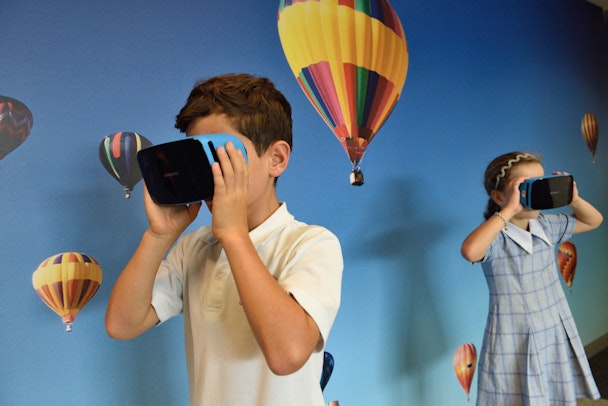Possibilities will be incredible for brands with right mindset and collaborators
From lightning-quick conversions to metaverse ecosystems and gamified product discovery, Katheryn Lui, chief strategy officer at Publicis Groupe Hong Kong, highlights some trends that will be reshaping the future for brands.

Getting ready for the future of marketing
If last year felt like a whirlwind of experimentation, breakthroughs, unpredictability and lessons learned, get ready for lightning-quick conversions and expanding your marketing ecosystem into the metaverse. This is no time for silos: to unlock growth into the future, you will need a diverse team of creators who can help you to navigate a brave new world of data-rich, direct-to-consumer, personalized spaces and marketing ecosystems.
Marketing will be an always-on conversation
Brands no longer have the pleasure of paving their way slowly to conversion from awareness. Moving forward, prepare to convert upon every opportunity and on every platform that arises throughout the journey.
AR filters on social are already leading fans and followers from stories directly to purchase. Whilst consumers are often triggered by these engaging activations, their hesitations at the consideration stage are often one of the brands’ biggest challenges. Keep an eye out for solutions like Zeekit, recently acquired by Walmart, which signifies both the direction and consumer potential of e-commerce in a virtual world. Zeekit is the first dynamic virtual fitting room that gives every person the chance to see themselves in any item of clothing found online using real-time image processing technology. It’s a good example of how AR will evolve from being a creative brand engagement tool to a consideration tool, playing a stronger role in ‘servicing’ consumers.
Bringing renewed focus on customer experience
With direct to consumers (DTC) platforms on the rise, more brands will have control and access over their customer data and journey. Spend time analysing and seeking opportunities to transform your full-funnel customer experience on an always-on basis, eliminating customer pain points and barriers throughout the journey. Each customer experience becomes more relevant and more personalized over time, with a goal to provide the shortest seamless path to purchase possible, so they can pay more time and attention to your products and services.
Shopify has revealed that products that utilize 3D and AR (augmented realities) technology have a 94% higher conversion rate than those that don’t. It’s a good time to get started with technologies that enable product demonstrations on e-commerce sites.
Looking out for collaboration across categories and competitors
Consumers are seeking more novelty in consumption than ever before, especially during the pandemic. We’ve seen numerous brand crossovers in the luxury industry, Simpson and Balenciaga, Loewe and Japanese animation Spirited Away, and Gucci’s Hacker Project with Balenciaga. What’s amazing is collaborating with competitors can now make perfect sense.
Ideally, you’ll want collaborators that create novelty, buzz and traction through exclusive or time-limited product launches, where you can also leverage each other’s customer base, storefront and media to multiply exposure from this joint effort.
Gamifying product discovery and fan engagement will be the way forward. Luxury brands especially are jumping on board to reach teenage and male customers, who currently account for only 30% of luxury purchases. From Fortnite’s deal with Ferrari to a virtual Sentosa ‘land’ in Animal Crossing to Louis Vuitton’s skins in Leagues of Legends, brand involvements in gaming are multi-faceted and scalable. While ‘players/gamers’ have become the latest trending target audience; it is important for brands to drill deeper and put the different profiles and segmentation into consideration when developing their ‘gaming’ strategy.
Brands will have to be metaverse-ready
No one can avoid hearing the word ‘metaverse’ and it is interesting to see how it is evolving so rapidly from being an immersive experiential platform for engagement to an opportunity for monetization.
Most brands began their metaverse journey with avatars, gaming, social communities and events for engagement and service at best. Now that sustainability has become a key consideration, this will incentivize many more brands to launch digital-first product collections and digital twins to monetize the metaverse. Nike created Nikeland in Roblox – a virtual world modelled after the company’s headquarters that offers exclusive virtual goods for sale. It also acquired RTFKT, which delivers virtual collectibles that ‘merge culture and gaming’. At Dolce & Gabbana’s Alta Moda show in Venice in September, the brand unveiled a collection of real and virtual clothing and accessories, also attached to NFTs. This futuristic collection auctioned for a mind-blowing $5.7m – potent indicators that there is business growth to be found in the metaverse.
Going further, we will see brands that create a seamless full-funnel metaverse journey, where consumers can create their own digital ‘art’, ‘piece’ or ‘experience’ through a brand’s interactive platform. Consumers can then get their creations minted on the blockchain and use them as wearables in multiple channels (be it on their social filters, games or content). Later, they may decide to auction these items again. The brand may even receive a fee for each transaction.
Think of the metaverse as an opportunity to expand your marketing ecosystem into the virtual world to better serve your community. By building this ecosystem, marketers can provide a valuable and meaningful customer experience whilst building awareness, purchase and advocacy all at once – a single ecosystem for immediate and sustainable business growth.
With the right mindset, strategy, roadmap and collaborators, the next few years will open incredible possibilities – especially for brands that have begun to embark on their platform journey already.
Growth will depend on having a strategy for learning, innovating and driving revenues by using platforms strategically, along with establishing a connected way of thinking and working, both internally and across your agency partners.
Katheryn Lui is the chief strategy officer at Publicis Groupe Hong Kong.
